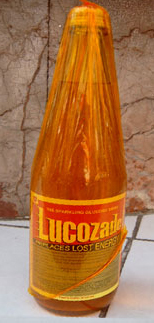Dydd Dewi Sant
Happy St David's Day! Today (March 01) is the Welsh national day. Everyone everywhere knows about and for some reason gets in on the act for St Patrick's Day, the Irish national day .... but today is St David's Day
 As a child growing up in Wales, I would be sent to school either proudly supporting a daffodil or more likely than not, an artificial leek safety pinned to my shirt or jacket. This artificial leek had been made either by my mother or grandmother from green and white wool, the same home made leek would have also been worn by most of the kids of the school.
As a child growing up in Wales, I would be sent to school either proudly supporting a daffodil or more likely than not, an artificial leek safety pinned to my shirt or jacket. This artificial leek had been made either by my mother or grandmother from green and white wool, the same home made leek would have also been worn by most of the kids of the school.
My sister's however would go to school in the Welsh national costume, as can be seen in the above picture. All the kids would take Welsh cakes, barabrith (meaning speckled bread) which is in fact a type of heavy fruit cake. If not these two, then other traditional food would be taken to enjoy throughout the day. Once at school we would have an eisteddfod; a festival, a celebration of Welsh music, language and literature.
Maybe one of the most well known Welsh songs, that you will hear us singing at rugby matches etc just so happens to be about cooking.; Sosban Fach (little saucepan). Translated it makes no real sense in English, but rhymes in Welsh. The music for which is as ingrained into Welsh Culture as Rule Brittania is in England. For those of you not familiar with the Welsh language it is a totally separate language, with no relation to English or to Latin. As can be seen in this verse from the song.
Maybe one of the most well known Welsh songs, that you will hear us singing at rugby matches etc just so happens to be about cooking.; Sosban Fach (little saucepan). Translated it makes no real sense in English, but rhymes in Welsh. The music for which is as ingrained into Welsh Culture as Rule Brittania is in England. For those of you not familiar with the Welsh language it is a totally separate language, with no relation to English or to Latin. As can be seen in this verse from the song.
When we got home from school, for dinner you can guarantee there would be lamb cawl (stew) and more welsh cakes.
Welsh cakes
Welsh cakes were traditionally made on the large wood or coal burning stoves, onto which would be placed one of these large, thick solid iron plates or stones. This one pictured, I am happy and proud to say was my Grandmother's, that I know proudly own and use at least once a week. Not to just make Welsh cakes, as it is equally great for making real crepes, frying a breakfast on and all manner of cooking. It is an inch thick, takes ages to heat up but cooks beautifully and totally non stick. 
I shall of course be cooking a batch up today, which is just as well as I have friends visiting and my Welsh cake crazy sister coming to stay. Along with them, will be a big pot of beef cawl to ward of the winter chills.
The trick to a great welsh cake is to ensure they are cooked throughout without burning them, but at the same time, they should be more than just a light golden brown. A good dark golden brown is best, this imparts the true flavour to them. If they are too light in colour, the flavour can be rather bland.
recipe - welsh cakes
200 gm flour
½ tsp baking powder
¼ tsp mixed spice
050 gm butter
050 gm lard
075 gm castor sugar
050 gm currants
001 pc egg
030 ml milk
recipe - preparation method
¼ tsp mixed spice
050 gm butter
050 gm lard
075 gm castor sugar
050 gm currants
001 pc egg
030 ml milk
recipe - preparation method
sieve the flour, baking powder and mixed spice together. Rub in the lard and butter. Add the sugar and the currants, then the egg and sufficient milk to form into a firm paste. Roll out on a floured board to a thickness of 1cm and cut into rounds. Cook on a greased griddle or a heavy based frying pan for about 3 minutes on each side or until a golden brown. Cool and sprinkle with sugar if desired
________________________________________________________________________________
________________________________________________________________________________

recipe - barabith
350 gm dried fruits
350 ml cold tea
001 pc egg (large)
250 gm brown sugar
600 gm self raising flour
001 tsp mixed spice
recipe - preparation method
Soak the fruits overnight in the tea (made extra strong).
Pre-heat oven to 170C. Add the beaten eggs to the tea and fruit and combine. Add the sugar and combine. add the flour and mixed spice. Pour into a prepared loaf tin (greased and lined) Bake for approx 90 minutes (cover if required to prevent the top over browning)
Remove and allow to cool for 5 minutes before removing from the tin. Slice and serve with chilled butter, jam and slices of Welsh cheddar cheese.































